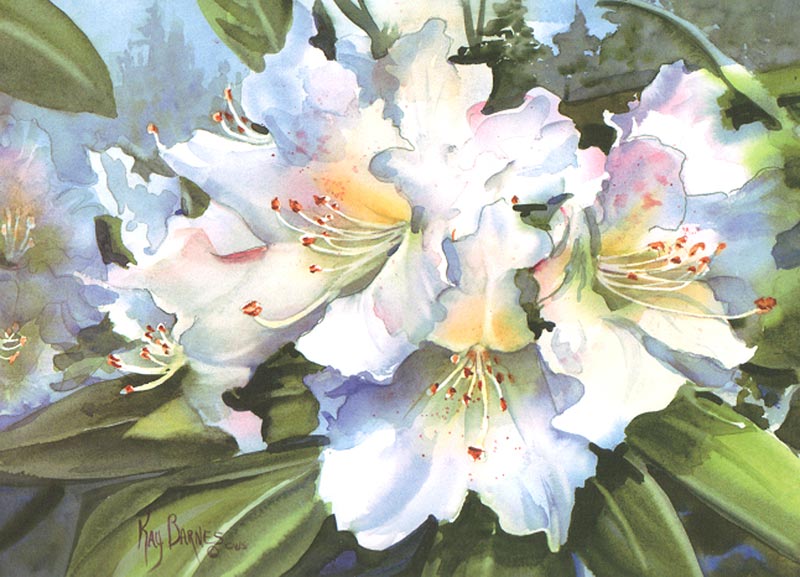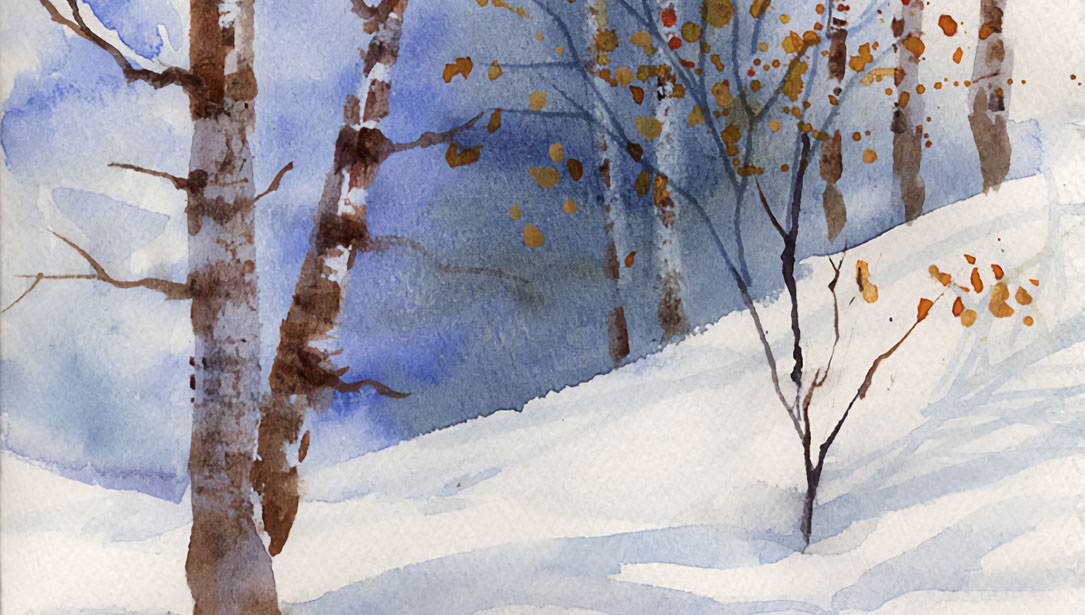Native to China, the white rhododendron is a fragrant evergreen shrub with large, beautiful spring blooms. Sketch a simple line drawing to start, then brush the stamens with Masking Fluid and let it dry thoroughly.
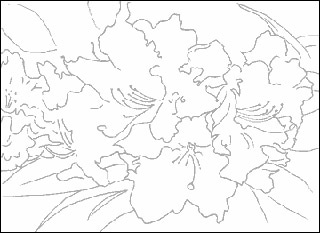
An abundance of light and shadow creates a composition of warm and cool colors in my painting called White Rhodies. My spontaneous “dancing” brushwork and use of color with both wet-into-wet and dry brush techniques result in a realistic floral painting that remains loose and dynamic. Learn to capture light on flower petals, add variation and interest in the shadows and leaves as you follow along here.
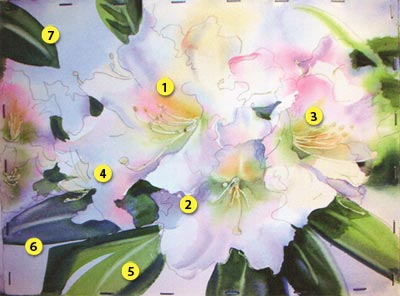
The underpainting is the structure – the skeleton of the painting that everything hangs on. Think of this first layer of watercolor as an outline. When you add stronger colors on the top, the underpainting won’t show, but a good underpainting helps prevent confusion as you progress through a complicated painting. In this initial stage, it is a road map. Establishing patterns of light (1) with Aureolin, Raw Sienna, and a pale wash of French Ultramarine will remind you to keep background areas cool.
In floral painting, begin with Aureolin (cooler yellow) and Raw Sienna (warm and buttery yellow), which will give the flowers a warm glow. I add Quinacridone Rose (2) and various blues to create wet passages of lavender shadows.
Using a large brush, make a large, loose T shape (3) with Raw Sienna. Add dabs of French Ultramarine into other areas. (4) Do it fast and keep your paints fluid.
Using Raw Sienna, Quinacridone Gold, French Ultramarine and Sap Green, place in the leaf shapes (5), allowing colors to bleed. Paint these in the bare spots, not necessarily over pre-determined leaf shapes. Touch the edges with French Ultramarine.
By working on the leaves as the paper dries, you will get nice harder edges (6). To blend and connect the clear areas, add clear water – the wet paint will pull toward these areas. This works only if your paper is still shiny wet. Dance your paint…from blue to green…from light to dark.
Pull paint and soften the edge. Coax it gently with a slightly damp brush. Make sure some leaves come in from outside the picture plane (7) Don’t have them all going out – it draws your eye away from the subject.
TIP: If the paper loses its moist shine, take a dryish brush and blend or feather the paint edges where needed.
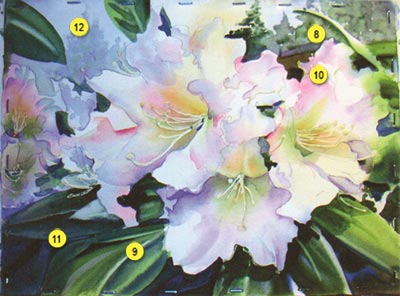
Even though the flowers are basically pink from Quinacridone Rose, make each bloom unique by varying the tones from pink to lavender to blue.
When a painting is still in the early stage with a preliminary background – and it is completely dry – you can rewet the paper (mist it front and back) and put on a second layer of background for more soft details. (8) With this level of moisture, you can softly blend elements into the background. As long as you have lost the shine, you can lift – as in the light veins on the leaves (9) or to correct an area that is over-painted or too dark.
Quinacridone colors, which are transparent and range from moderate to strong staining, are great for flowers. Underpaint some petals with Quinacridone Rose, then touch in French Ultramarine at the edges. (10) Add Aureolin in the center – all while wet, so they run into each other.
Greens are good shadow colors when painting flowers. Consider underpainting purple shadows (11) and let them dry, then glaze with yellow tones.
After establishing the light and mid values of the first three layers, tweak your painting by adding darks to key areas where you need emphasis. Focal areas pop when you play the lightest lights against the darkest darks and the brights against neutrals.
Glazing washes of light to medium density colors can really warm (12) or cool areas to push or pull objects around. Consider lifting some areas and softening others.
Now is a great time to let your painting dry and analyze its weak or over-painted areas and adjust thoughtfully. This final step is the one that makes or breaks a painting. Err on the side of “less is more.” Sometimes removing a little paint is all you need to do. Now – sign it, sell it, and go on to the next one!



